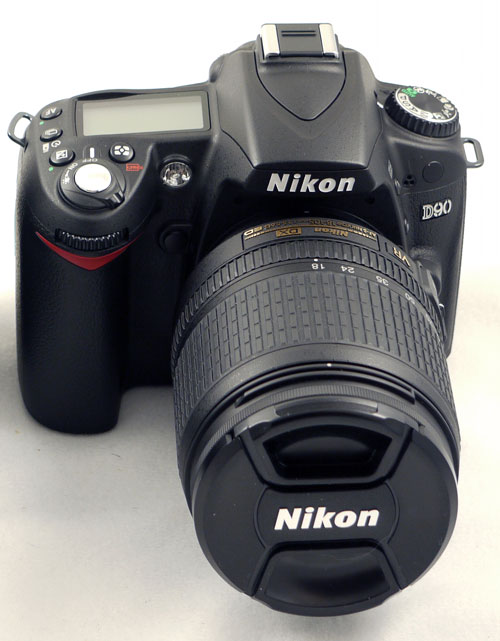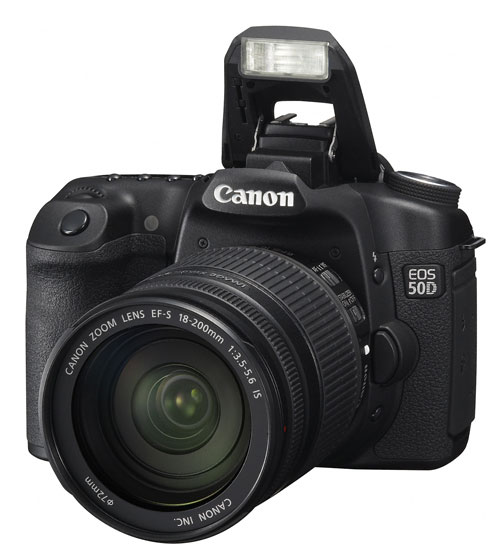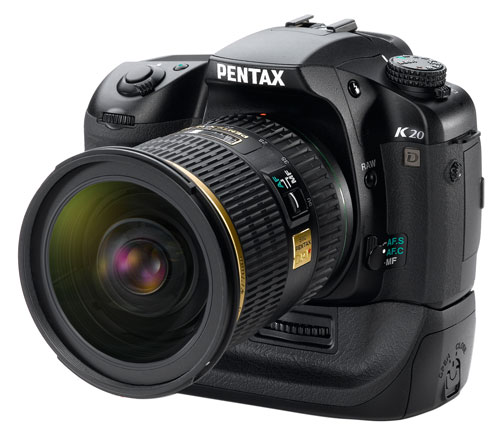Digital Cameras for the Holidays
by Wesley Fink on November 27, 2008 12:00 AM EST- Posted in
- Digital Camera
Prosumer Picks
Photo hobbyists usually have an investment in a particular lens line and that influences their buying decision. It also seems emotions run high among photography hobbyists, so any hard recommendation in the prosumer area invites a stoning from fans of other systems. However, we like to think we are objective and some recent introductions have reshaped value in the prosumer space.

Nikon pulled out all the stops with the new D90. It basically features the same 12.3MP CMOS sensor as the Sony A700 and Nikon D300 with updated image processing. However, the starting price is $999 and not $1395 or $1795. That will deliver a lot of value to the Prosumer segment.
Nikon lavished most of the features of the D300 on the new D90, including the 3" 920,000 pixel hi-res LCD used on the D300 and Sony A700. The only major exception is the 51-point AF module unique to the D300 and A700/D3; the D90 merely has a fast 11-point AF. Also new to the D90 and missing from the D80 are two flavors of Live View and Auto Sensor Cleaning. Image processing has been borrowed almost in total from the D300 with both cameras now featuring Nikon's Scene Recognition System, and D-Lighting for expanded dynamic range. Continuous shooting speed also jumps to 4.5 FPS from the 3 FPS of the D80.
Nikon also introduced a new standard lens with the D90 in the 18-105mm VR AF-S. The new normal zoom is arguably the best image quality of Nikon's current selection of crop-sensor normal lenses. Last, but not least to some buyers, the D90 features a Movie Mode - a first in this class. Unfortunately, auto-focus is not active in the movie mode so this feature was of limited use in our testing. However, it will be a nice option for shooting subjects that stay in place and don't move much - like still life. In total the D90 is a great value in the prosumer class and hard to beat.

The new Canon 50D moves Canon to the top of the class in crop-sensor resolution again with a 15.1MP sensor and an incredibly wide range of ISO adjustments to ISO 12800. However, resolution tests show about the same results as the 12.3MP Nikon D90, D300, and Sony A700. Noise also increases a bit with the more densely packed sensor, resulting in no real gain in noise-reduction at the top, and a slight reduction in dynamic range compared to the competition.
The 50D does feature a 920,000 dot LCD, which is a significant improvement over the 40D 3" low-res screen. Image processing is also sped up with a Digic 4 processor. While the list price is $1395 for body only, the 50D is currently selling for around $1200.

Canon continued the 40D in their product line and the 10.1MP 40D has become a super value in this class. If you want a top advanced amateur camera but price is a concern, you can find the 40D selling for $799 to $849, which is an excellent value.

Another great value in prosumer cameras is the rugged, pro-sealed Pentax K20D, which is now selling in the $750 to $800 price range. Resolution is a very high 14.6 megapixels, but noise and color shifts can become an issue at higher ISOs. AF speed is not the fastest and neither are continuous frame rates, but as a high resolution photo tool with a huge offering of Pentax AF lenses the K20D is an outstanding value.
If you want a more rugged pro Nikon body, 51-point AF, and a few more features - at a higher price - the Nikon D300 is a good choice. The Sony A700 uses the same Sony 12.3MP sensor as the D300, and it is very fast and capable. Sony has been running a $300 off special pricing recently, presumably because a replacement model is expected at PMA early next year. The A700 lacks any kind of Live View if that feature matters to you, but Live View is pretty basic and very slow in most of the DSLR competition so it is more a checklist feature than truly useful.
If you are an Olympus fan, you will need to wait for a couple of months. Olympus has announced the new 12MP E30 that brings most of the great E3 features, including its super fast AF module, down to a lower prosumer price point. The E30 will not ship until early 2009.










41 Comments
View All Comments
Johnmcl7 - Thursday, November 27, 2008 - link
Strange explanation - the LX3 is a compact camera, a DSLR is far bigger and heavier leaving the two types of devices for very different uses.The G1 isn't comparable either as it's also quite a bit bigger, I currently use an LX2 for when the DSLR is just too big as the LX2 slips in a pocket and is unobtrusive. The LX3 looks to be very good compact camera for those looking for a high quality compact to compliment a bigger camera.
John